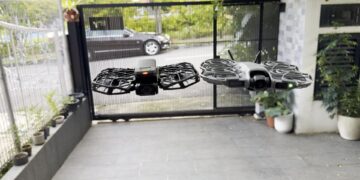It seemed like a concert last Saturday as busker Jeff Ng captivated the masses outside the Cathay. Fans numbered in the hundreds waved their light sticks and smart phones to the beat of his music and sang in unison to the Mandarin melodies that Mr Ng was belting.
The 32 year-old musician has been performing for over 14 years, and recently started performing outside The Cathay in May. His popularity steadily grew and attracted fans – both new and returning – in droves.
“It took about six weeks for the crowd to grow to this size, and it’s shocking to me … I really thank everyone who showed me their support as well as my team for helping me. Everything was so surreal, I never thought that this would happen.” Mr Ng told 8days in an interview.
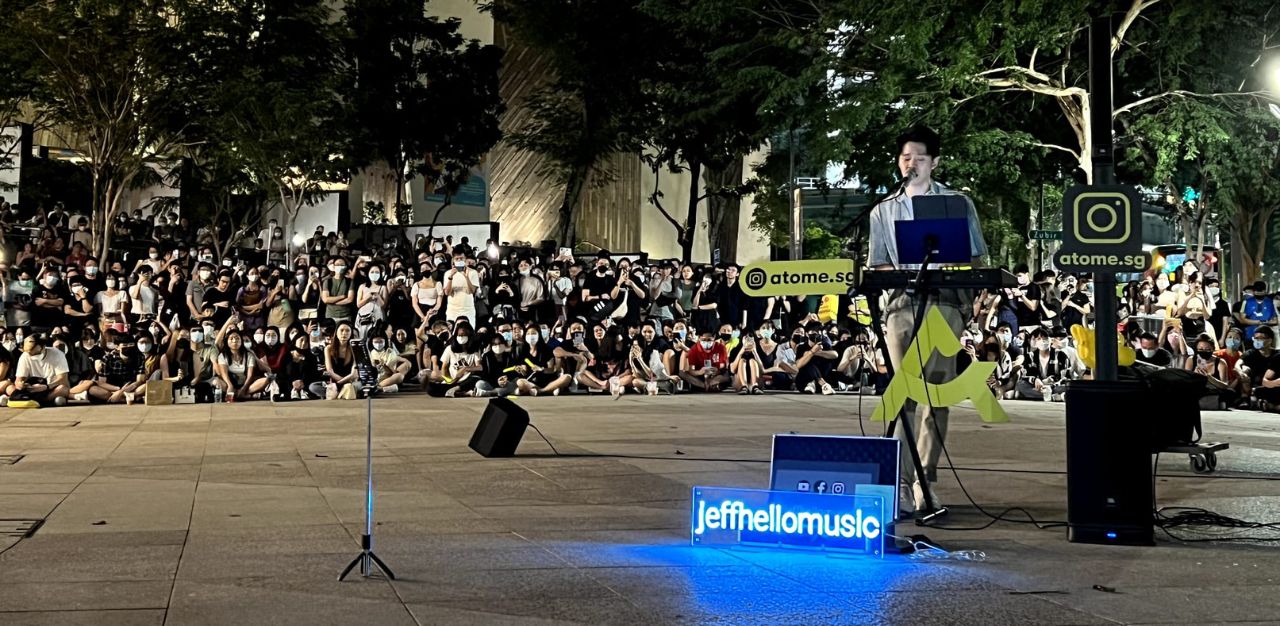
Such displays of public performances truly mark Singapore’s return to normalcy after Safe Management Measures were relaxed on 22 April and the economy reopened.
Before the Covid-19 pandemic, more than 350 buskers typically livened the streets of Singapore with their singing or high-wire performances.
Busking has long-standing romantic connotations with street performing.
Headlining musicians like Ed Sheeran and Tash Sultana, began their illustrious careers on the streets of their hometowns busking to make their name. Rag to riches tales of streets to sold out arenas, right there for the taking. The streets are fair to all who dare perform.
Is this a sign of things to come?
The street is your oyster
The Busking Scheme, introduced in 1997 by the National Arts Council (NAC), was in a bid to enliven city life and energise urban spaces.
Over 80 designated busking locations were demarcated islandwide to provide a platform for individuals to share their creative expressions and interact with audiences in public spaces.
While music might be the performance art most associated with busking, street entertainment includes various other forms of theatre and visual arts performances.
One such act in Singapore was the iconic “bead uncle”, the late Mr Oh Ow Kee. A regular at Orchard Road swinging giant bead chains, he died this month at the age of 80. Then there is Roy Payamal, better known as “the silver man”. He is a statue performer outside Ngee Ann City where he would stand still for hours, painted in silver.
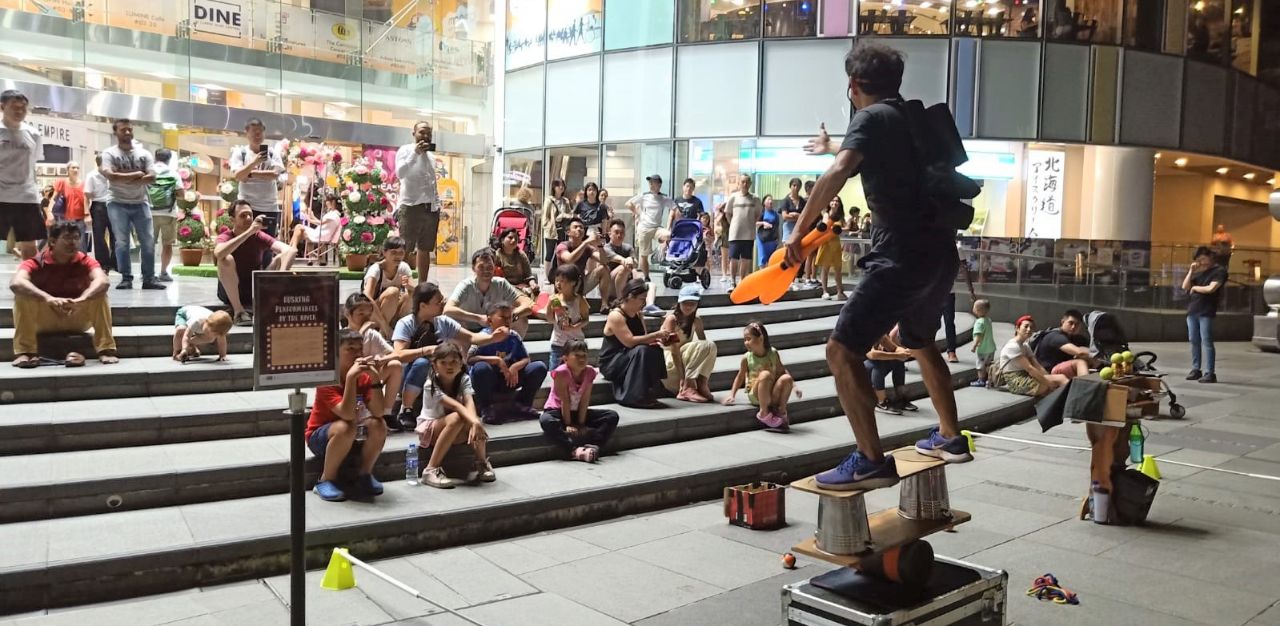
But the reality is: Before they take their talents to the streets, busking hopefuls need to go through auditions. Once they make it through, they are handed their busking licence. This allows them to book and ballot for slots across the island. Such slots comprise community venues in the heartlands, public parks and selected areas in the central business district (CBD).
Storming the streets
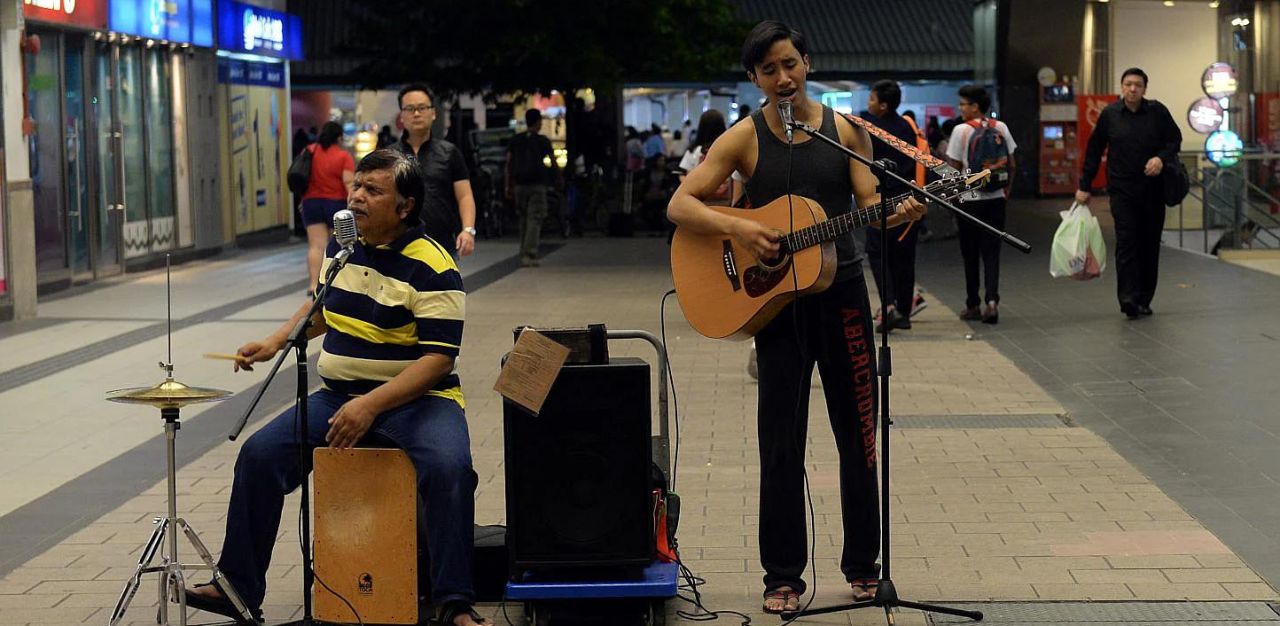
Twenty-six-year-old Jonathan Goh describes the return of busking as “electric”.
Mr Goh is one-half of a circus duo known as The Annoying Brothers. They perform around Clarke Quay and Orchard Road.
“I worked as a food delivery rider for about two years during the pandemic. I perform my acts at events and private functions as well. Since busking resumed, I have been busking about three times a week to supplement my income from my other acts, but nothing replaces the atmosphere busking provides. I love it when people stop to watch my performance because I capture their attention. It’s a very organic and spontaneous experience and it holds a special place in my heart,” says Mr Goh.
He is also the founder and co-chairman of Buskers’ Association, a society that represents the interests of collective buskers in Singapore.
“It’s great that busking has resumed and many buskers are very excited. I think that the recent popularity of Jeff Ng is great for our community. It draws attention to the space and the public have become more interested throughout the years. I started busking in 2014 when the perception was that we were like ‘beggars’ entertaining crowds for handouts. But now, people take interest in the other sides of our lives,” says Mr Goh.
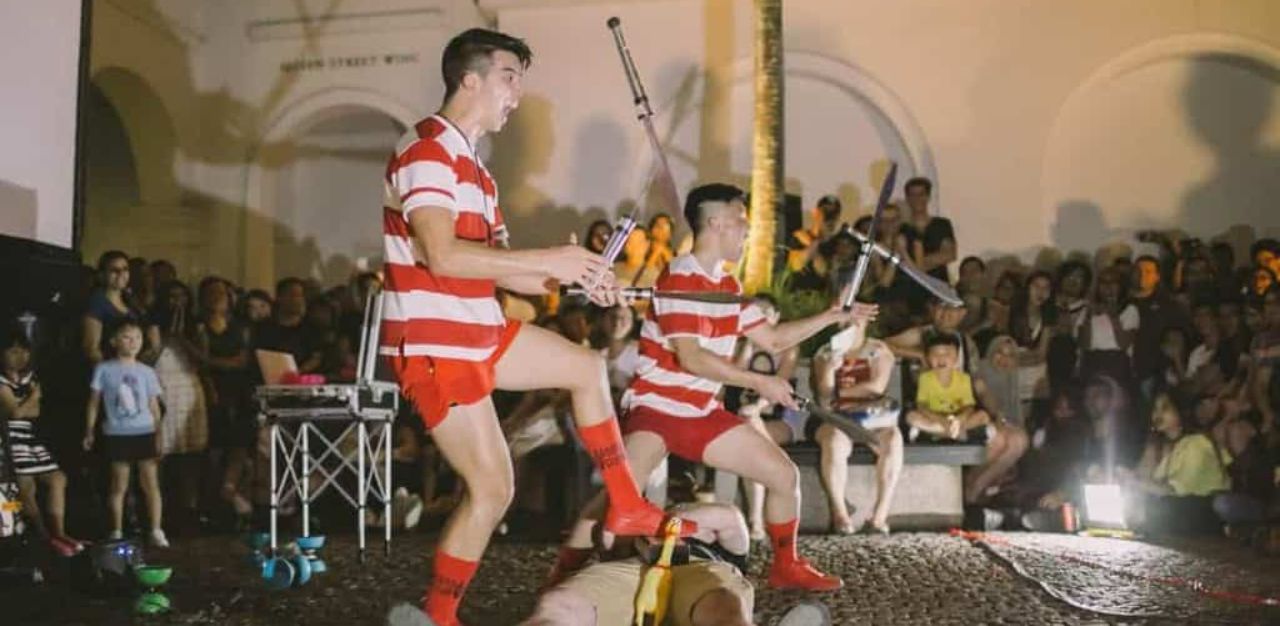
“Buskers have many profiles. There are hobbyists, part-timers, and full-timers. Our commonality is that we choose to busk because we love the live interaction we have with the crowds in these public spaces,” he adds.
In its response to TheHomeGround Asia story, NAC says as the agency championing the arts, it is happy to see buskers enlivening the streets with their creative expressions and were pleasantly surprised with the overwhelming response and support from the public.
“Much of this credit goes to buskers in their ability to engage different communities and also reach out to their fans and supporters via various channels – including social media,” says its spokesman.
While the surge in popularity for buskers like Ng paints a rosy picture of recovery and growing support for buskers, reports from the street seem to suggest a different and slightly more complex picture of the return and future of busking.
Lead vocalist of Chinese pop group Afterworkers (下班族) Joelyn Koh says that her group is glad to be back on the streets, but reveals that buskers face difficulties in securing venues.
“It’s good for Jeff Ng personally and the attention generated for buskers, but it doesn’t necessarily represent the majority of us. The uptick could be a phase after the relaxing of measures. It’s more tedious now to book a slot after the launch of a new busking e-service portal,” says the 30-year-old.
Members of the Afterworkers (下班族) hold full-time jobs and usually busk once a month around Orchard Road and Marina Bay.
Mr Jeremy Chin, a 24-year-old full-time guitar teacher who busks twice a week in his spare time, remains excited about the return to busking despite the difficulties in securing slots.
“I feel great to be back. I’m happy for the people who managed to book six hour slots for the entire week at hot spots because they have the fastest fingers. I need to go and bookmark the NAC website now so I can keep watch on any available slots. At this point, getting an evening slot at Paya Lebar is harder than striking 4D. I hope the policies can be reverted to the old system so that buskers can rely on talking and collaborating among themselves, instead of relying on a rigid booking system that causes everyone to quarrel,” he says.
When asked about these concerns, NAC says “Responding to feedback from the busking community, NAC has launched the Busking E-Service portal following the resumption of busking activities after the relaxation of the safe management measures. The portal allows discoverability of buskers and enables them to gain access to more than 70 locations around the island. In addition, the general public are able to find out where busking will take place and support their favourite buskers easily.”
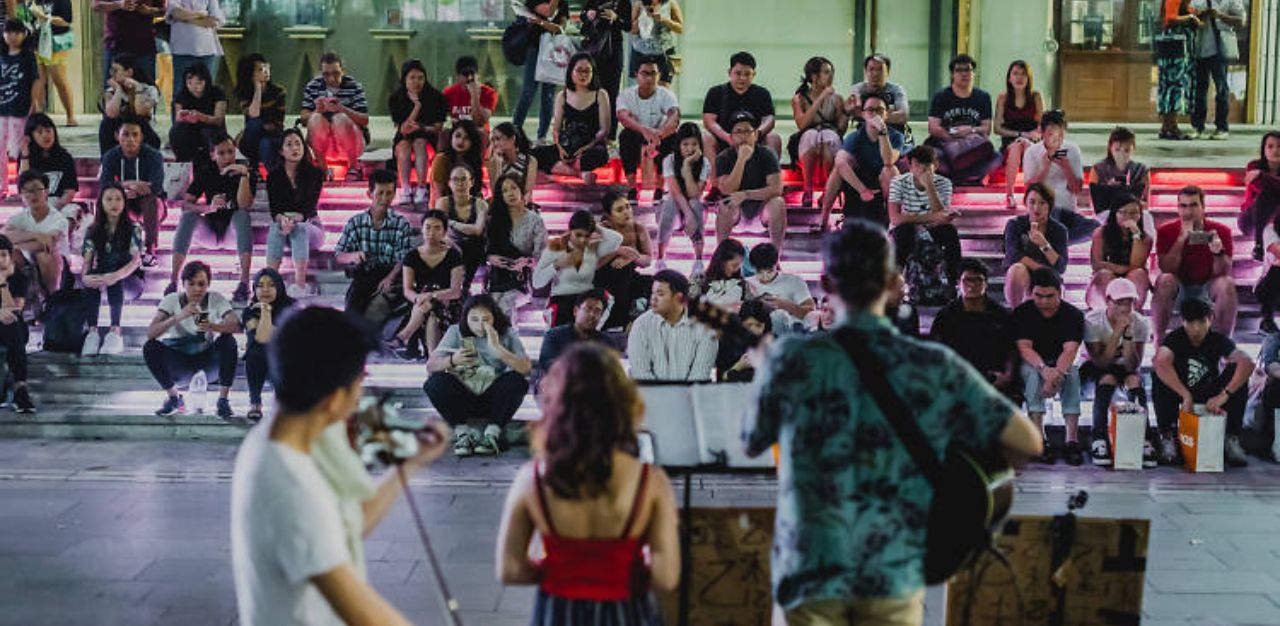
In December 2020, the NAC resumed busking through a pilot programme at Scape and Clarke Quay over two weeks but it received unsatisfactory feedback.
Buskers have since spent the time in limbo and struggle, pivoting to other jobs to supplement their income and unable to perform.
In a 2021 interview with TheHomeGround, Mr Yeo Ying Hao of Afterworkers (下班族), said, “Just hang in there a little longer. It seems like we are reopening soon. It seems like help is on the way… it’s time to really start practising and getting back into shape. And when the streets reopen, I would like to see all of them in their full glory.”
Even after patiently hanging on, the spotlight is shining down on just a few buskers.
Join the conversations on THG’s Facebook and Instagram, and get the latest updates via Telegram.




